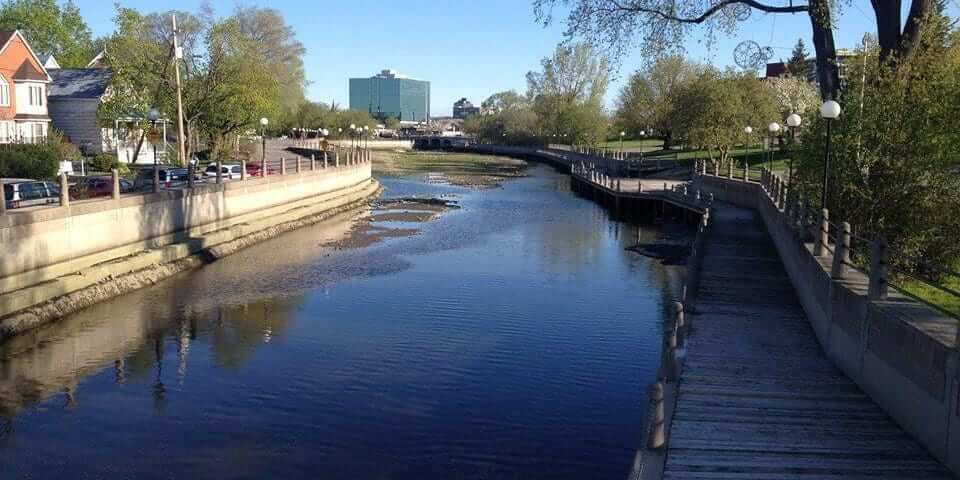Posted: October 27, 2017
Brewery Creek and beyond: our report on water quality in the river

This past Wednesday we gathered at Les Brasseurs du Temps, along with our partners Les Amis du ruisseau de la Brasserie, to release our report on water quality in the river.
The report, “Brewery Creek and Beyond: The Problem with Combined Sewer Overflows in Ottawa and Gatineau,” examines the data collected from five years of studying water quality at Brewery Creek, Gatineau.
Using the results of the study, we are looking to press for positive change for the Ottawa River with the local politicians who set budget priorities and have the power to make improvements to the sewer systems in our watershed.
Brewery Creek
We are incredibly lucky to have a gem like Brewery Creek in our city. It has such incredible potential, but it isn’t always treated like the resource it is. At one end of Brewery Creek, we have this wonderful gem where people can wade, fish, and enjoy the Creek. At the other end, we have some of the highest sewage pollution levels in the city. We cannot continue to ignore this problem.
There are six known combined sewer outlets along Brewery Creek. The data from one in particular, located at the dam below Montcalm St., makes that section of the Creek one of the most polluted in the city. Paddlers and fishermen are only safe to use the creek less than 50% of the time.
And while the report focuses on Brewery Creek, it has broader implications for the National Capital Region.
Sewage Overflows
Most of the time, water quality in the Ottawa River is great for recreational activities. However, that is not always the case.
When it rains or when snow melts, untreated sewage often flows in the river from combined sewers. These overflows are a risk to public health.
In 2016, there were 28 combined sewer overflows from the Ottawa side of the river, releasing about 540 million litres of untreated waste and storm water into the river.
Gatineau doesn’t publicly report their overflows, however Ottawa Riverkeeper submitted a request for information and were provided with raw data on the number of overflows for 2016 and 2017.
Using the data, we estimated that there were 1,350 overflows in 2016 and, as of this year, 1,327 overflows. These numbers are alarming and need to be addressed.
Perhaps more worrisome is that the public is not alerted to these overflows.
Solutions
We have been spearheading a campaign throughout the National Capital Region, asking the mayors of Ottawa and Gatineau for real-time reporting of sewage overflows. To date, over 3,000 concerned citizens have asked their mayors to let them know when raw sewage is released into their river. We’re excited by these numbers and excited to see them grow.
In our report, we also outlined 5 recommendations for the cities of Ottawa and Gatineau to improve the situation. You can read them here.
< Previous post Next post >